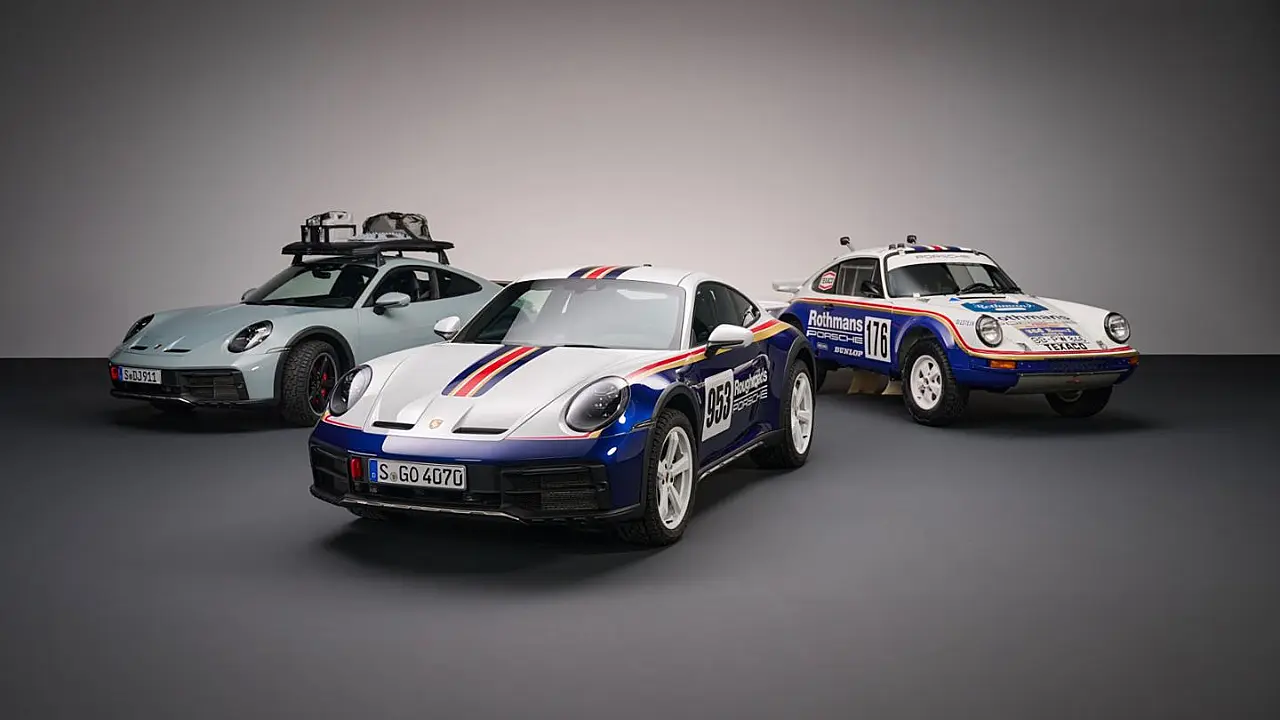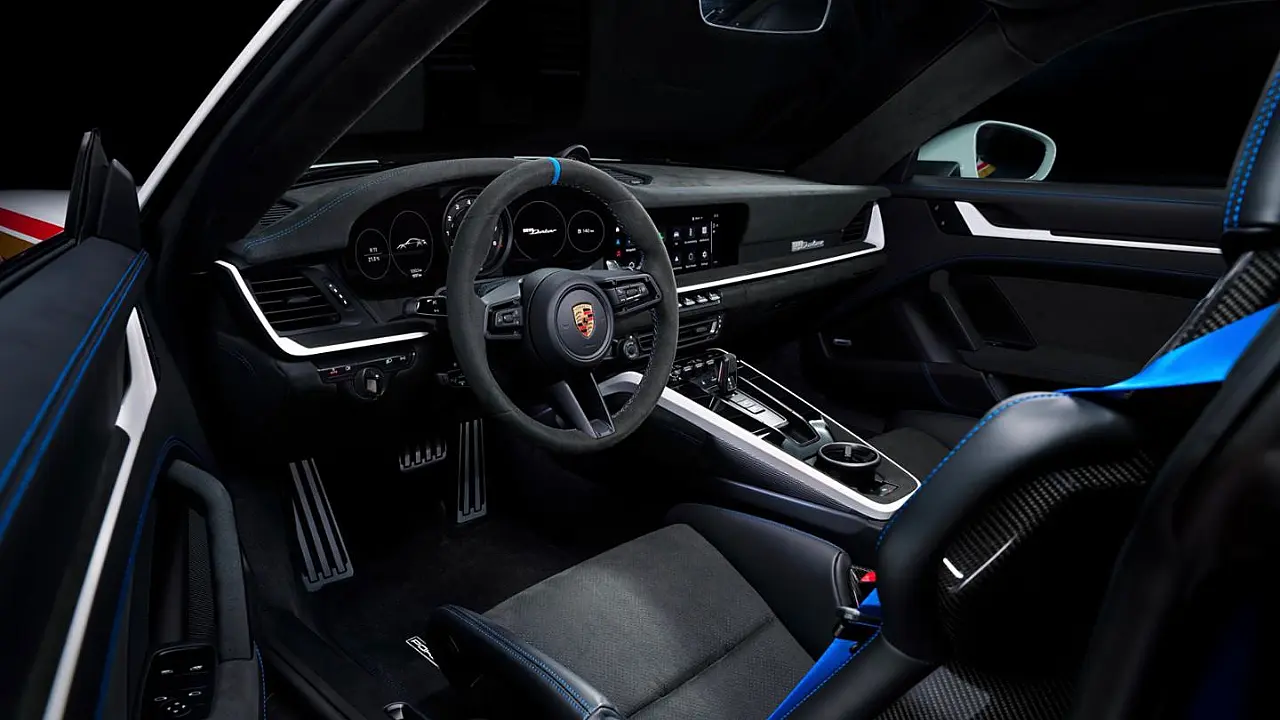
Supercars have always been ranked high on exclusivity. However, this hasn’t stopped the makers of these vehicles from pushing further on the exclusivity chapter. Resulting in some truly magnificent and unique vehicles which can take your breath away every time you see them.
Many limited edition models of highly exquisite supercars and hypercars have been produced over the years. These vehicles mostly have minor design improvements over the original vehicle.
However, carmakers occasionally go too far and create models that are almost completely different from the original model. Porsche is one such supercar manufacturer to create a special edition of its flagship 911, the 911 Dakar.
Essentially a 911 on steroids, the Dakar edition pays homage to the company’s 1984 Paris-Dakar rally win, which was simultaneously the birth of all-wheel drive in the Porsche 911.
With production limited to 2,500 units, the 911 Dakar undergoes significant changes, primarily to the chassis. Although the car uses components from other 911 992 generations, such as the Carrera 4 GTS and GT3 models, Porsche has added quite a few new bits, making the new limited edition car the most capable 911 in terms of offroading.
The 911 Carrera 4 GTS chassis is carried over to the new limited edition model. Aside from the chassis, the new model retains the same engine as the standard Carrera 4 GTS, a 3.0-litre twin-turbocharged flat-six mated to an eight-speed PDK and producing 480 PS and 570 NM of torque.
Meanwhile, the standard equipment includes rear-axle steering, the engine mounts from the 911 GT3, and PDCC anti-roll stabilisation.
With the new upgrades, the new sports car sprints to 100 km/h in 3.4 seconds; however, due to the Pirelli Scorpion All Terrain Plus tires, the top speed is limited to 240 km/h.
The tread pattern is nine millimetres deep, with reinforced sidewalls and threads made up of two carcass plies. This makes the Porsche 911 Dakar's tires ideal for even the most difficult terrain and highly cut-resistant.

In addition, the new model gets a new set of driving modes which includes 'Rallye mode' and 'Offroad mode.' Rallye mode is ideal for loose, uneven surfaces and features rear-focused all-wheel drive, whereas Offroad mode automatically activates the high clearance and is designed for maximum traction on difficult terrain and sand.
Both the new driving modes also feature the new Rallye Launch Control, which enables impressive acceleration on loose surfaces and allows wheel slippage of around 20%.
Regarding ride height, the 911 Darkar sits 50mm higher than a normal Carrera S and can be raised by an extra 30mm to crawl over serious boulders allowing for a total ground clearance of 205mm. Interestingly, the company’s full-size SUV, Cayenne, has a standard ride height of 190mm, 10mm less than the new sports car!
Getting Rally Ready
The 911 Dakar also has a newly developed, fixed lightweight rear spoiler made of CFRP and a CFRP front luggage compartment lid with air outlets taken from the 911 GT3.
While standard off-road features include red aluminium towing lugs at the front and rear, widened wheel wells and sills, and stainless steel protective elements on the front, rear, and side sills.
Notably, the side air intakes on the redesigned front end are also protected against flying rocks by stainless steel grilles.
The Porsche 911 Dakar's roof has a visible 12-volt power outlet for the optional roof rack's headlights. With a capacity of 42 kg, the rack can carry rallying equipment such as fuel and water canisters, folding shovels, traction boards, and an optional roof tent.
On the inside, the carmaker has fitted the rally edition 911 with bucket seats while the rear seats from the 911 Carrera 4S GTS are removed for weight-saving measures. In addition, it has a standard Race-Tex finished surface with decorative stitching in Shade Green, which is also exclusive to the 911 Dakar as a metallic exterior finish. While the Rallye Sport Package with roll-over bar, six-point seat belts and fire extinguisher are optional.
Rallye Sport
The Rallye Sport Package includes a two-tone paint finish in White/Gentian Blue Metallic, marking the first time Porsche has used a combination of bi-colour paint and decorative foiling in series production.
Besides, on the side of the vehicle, the customer can choose a unique race number between 0 and 999.

The 911 Dakar with Rallye Design Package, based on the winning vehicle of the 1984 Paris-Dakar Rally, also has 'Roughroads' lettering on the doors and the rally stripes in red and gold. The term is a registered trademark that refers to the concept of the 911 Dakar and its suitability for off-road driving.
While the white-painted rims and the red taillight strip, in contrast to the standard vehicle, round off the distinctive appearance.
Besides, interior highlights include extended Race-Tex and leather surrounds, as well as Sharkblue seat belts and accents.
Not The Only Off-Road Supercar From The VW Group
With those rally-inspired styling elements and updates, the Porsche 911 Dakar looks quite unique. Notably, it is not the only supercar from the VW group stable to wear off-road credentials.
Earlier in the month, the supercar maker from the VW group, Lamborghini, announced its plans to introduce an all-terrain super sports car in the form of Huracán Sterrato.
The carmaker from Italy says that the new supercar is the first one designed for maximum driving pleasure even away from the asphalt on loose or dirt surfaces, reinterpreting the very concept of sportiness and emphasising the brand principles of brave, authentic and unexpected.

The supercar is said to carry the same naturally aspirated V10 engine from the Huracán. Interestingly, this will be the last Lamborghini to feature a naturally aspirated engine.
The carmaker from here on plans to bank upon turbocharged and hybrid engines to reduce its carbon footprint in the shorter run.
Returning to the Huracán Sterrato, while not much is known about the vehicle, the teaser shows that the new supercar will sit higher than the standard Huracan while also sporting rally-inspired features such as flood lights on the bonnet, wheel arch cladding and roofrails among others.
Also Watch
There is still a stigma around buying super luxury cars in India: Sharad Agarwal, Lamborghini India

